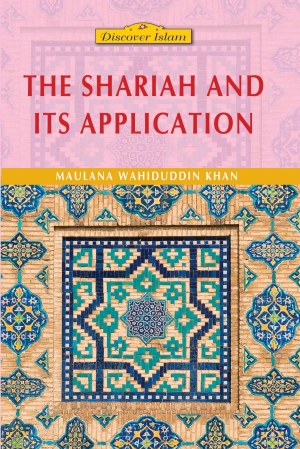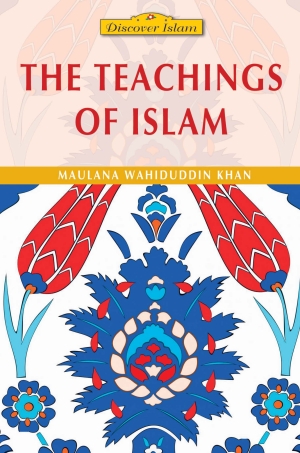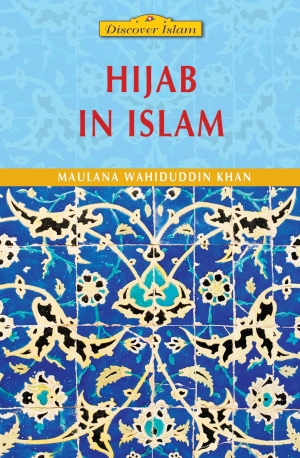What is the concept of veil or Hijab in Islam? Nasiruddin al-Albani, a famous scholar, has written a book titled Hijab al-Mar'ah al Muslimah fil Kitab was Sunnah discussing the subject in the light of the Quran and Hadith. He says that whenever a woman steps out of her home, it is incumbent upon her to cover herself completely so as not to show any part of her body except the face and the hands. According to his findings, a woman must observe the following rules of the Hijab: "The whole body, except for the exempted parts, should be covered. Any veil that in itself becomes an attraction is to be avoided. Garments should not be transparent. The dress should not be tight-fitting, accentuating the body. The first rule of the Hijab has been derived from the following verse of the Quran:
"Say to believe women that they should lower their gaze and remain chaste and not reveal their adornments save what is normally apparent thereof...." (24: 31)
Allama Nasiruddin al-Albani interprets the wording "to cover their adornments except such as are normally displayed, " meaning that the hands and face are exempt from covering. He concludes his argument with these words:
"The garment should cover the entire body of a woman except for the face and hands and should not become an attraction in itself. Neither should it be thin or tight. It should not accentuate the body."
This exemption of face, hands, and feet, derived from the above verse, is extremely important. This shows that Islam does not intend to stop women from going out to receive education or work but rather desires to observe the Islamic culture known as Hijab. Hijab requires a dress which properly covers the body, for a woman is obliged to observe the rules of modesty.
Featured Articles
Featured Videos
FAQs
Nasiruddin al-Albani, a famous scholar, has written a book titled Hijab al-Mar’ah al Muslimah fil Kitab was Sunnah. The author has discussed the subject in the light of the Quran and Hadith. He says that whenever a woman steps out of her home it is incumbent upon her to cover herself completely so as not to show any apart of her body except the face and the hands.
According to his findings the following rules of Hijab must be observed by a woman:
The whole body, except for the exempted parts should be covered. Any veil which in itself becomes an attraction is to be avoided. Garments should not be transparent. Dress should not be tight-fitting accentuating the body. The first rule of Hijab has been derived from the following verse of the Quran.
“Say to believing women that they should lower their gaze and remain chaste and not reveal their adornments save what is normally apparent thereof....” (24: 31)
Allama Nasiruddin al-Albani interprets the wording “to cover their adornments except such as are normally displayed”, to mean that the hands and face are exempt from covering.
He has drawn extensively from the Hadith in support of his argument. After studying the interpretations in connection with the Quranic verses (24: 31, 33: 59) he writes: “It is clear from the instances drawn from the Quran and the Hadith that though it is preferable for a woman to cover her face, it is not compulsory for her to do so.”
“It would be better if women followed this practice, but there is no harm if they do not.” He concludes his argument with these words: “The garment should cover the entire body of a woman except the face and hands, and should not become an attraction in itself. Neither should it be thin or tight. It should not accentuate the body.”
This exemption of face, hands and feet, derived from verse 31 of chapter 24 is extremely important. This shows that Islam does not intend to stop women from going out to receive education or to work but rather desires them to observe the Islamic culture known as Hijab.
Hijab requires a dress which properly covers the body, for a woman is obliged to observe the rules of modesty.
The first rule of hijab has been derived from the following passages of the Quran:
“Say to the believing women to turn their eyes away (from temptation) and to preserve their chastity; to cover their adornments except such as are normally displayed; to draw their veils over their bosoms and not to reveal their finery except to their husbands, their fathers, their husbands’ fathers, their sons, their step-sons, their brothers, their brothers’ sons, their sisters’ sons, their women-servants, their slave girls, male attendants lacking in natural vigor, and children who have no knowledge of sex. And let them not stamp their feet when walking so as to reveal their hidden trinkets. Believers, turn to Allah together in repentance, that you may prosper.”(The Quran, 24:31)
The second Quranic verse in this connection is as follows: “Prophet, enjoin your wives, your daughters and the wives of true believers to draw their veils close round them. That is more proper, so that they may be recognized (as virtuous women) and not molested. Allah is Forgiving and Merciful.” (33:59)
Muhammad Nasiruddin al-Albani, (1914-1999), a famous Salafi hadith scholar, interprets the wording of 33:59, “to cover their adornments except such as are normally displayed,” to mean that the hands and face are exempt from covering. He draws his argument in support of this from the Hadith.
After studying many ahadith in connection with the verse from Surah 33 of the Quran, he writes: “It is clear from the instances drawn from the Quran and the Hadith that, although it accords with the shari’ah and it is preferable for a woman to cover her face, it is not compulsory for her to do so. It would be better if women followed this practice, but there is no harm if they do not.” (Hijab Al Mar'aa Al-Muslima, al-Albani, p. 31)
According to Muhammad Nasiruddin al-Albani’s findings the following rules of hijab are applicable (Hijab Al Mar'aa Al-Muslima, al-Albani, p. 37):
1. The whole body, except for the exempted parts should be covered.
2. But any veil which in itself becomes an attraction is to be avoided.
3. Garments should not be semi-transparent.
4. Dress should not be tight fitting.
5. Garments should not be perfumed.
6. The form of dress should not in any way resemble that of men.
7. It should not resemble that of non-believers.
8. Garments should not reflect worldly honor.
Source: Spirit of Islam October 2018
These days, many Muslims use the term hijab as equivalent to burqa, but the word hijab is not used in the Quran in this sense. 'Hijab' literally means curtain. 'Hijab' is used in the Quran seven times, but not in the sense that is prevalent among Muslims today, that is, it is used in its literal sense of 'curtain'.
Regarding women's purdah, two words have been used in the Quran: jilbab (33:59) and khimar (24:31). But again these words are not used in their present connotation. It is a fact that both words have a similar meaning, that is, chaadar or duppatta, that covers the body of a woman and not her face. So it is very clear that the present 'burqa' or 'hijab' are not Quranic terms; both are part of Muslim culture and not part of Quranic commandments.
According to the Hanafi and Maaliki School of fiqh, three parts of a woman are exempted from satr (body covering). These three are wajh, kaffain, and qadmain. That is, face, hands and feet. According to the Shariah, women are required to cover their body with clothing which is not tight fitting and not meant to attract others. (Chapter 24, verse 31, Tafsir Usmani)
It is noteworthy that the well-known Arab scholar, Sheikh Muhammad Naasiruddin al-Albani, clearly endorses the above-mentioned position of the Shariah in his book on this subject, Hijab al-Mar'ah al-Muslimah fil Kitab was-Sunnah (The Veil of a Muslim Woman). He goes on to say that it is clear from the Quran, the Hadith and the practice of the companions and the tabiun (companions of the Prophet's companions) that, whenever a woman steps out of her home, it is incumbent upon her to cover herself completely so as not to show any part of her body except the face and the hands.
The religion of Islam focuses on spirit rather than on form. It lays emphasis on pious thinking and value-based character. According to Islam, Muslims must purify themselves in terms of ethics. Muslim women must develop themselves in terms of spirituality; they must develop their own feminine personality rather than imitate men and must play a constructive role in society rather than become objects of entertainment.
During the Prophet's time, Muslim women were active in different fields, such as agriculture, horticulture and social work. But at the same time, they constantly preserved their feminine character. In the early history of Islam there are many such incidents which show that a woman has equal freedom as that of man. In this respect there is no difference between the two. A woman enjoys the same freedom as a man in Islam. Islamic literature mentions some pious women who have played a highly creative role in their society, like Hajira, the wife of the Prophet Abraham; Mariam, the mother of Jesus Christ; Khadija, the wife of the Prophet of Islam; Aishah, the wife of the Prophet of Islam. These women, accepted as models in the society of believers, are good examples for the women of today.
To understand the prevalence of Hijab in Muslim society in the present times it is necessary to keep in mind that there is a difference between Islam and Muslims. Islam is a name of an ideology while Muslims are a community which has its own culture, which keeps changing owing to various circumstances. In such a situation Muslim tradition will be judged in the light of the original teachings of Islam instead of regarding this culture as Islam itself.
Source: Spirit of Islam March 2020








